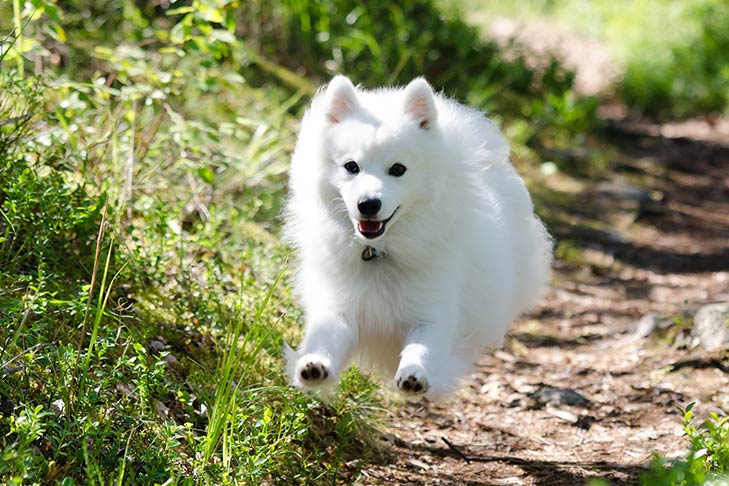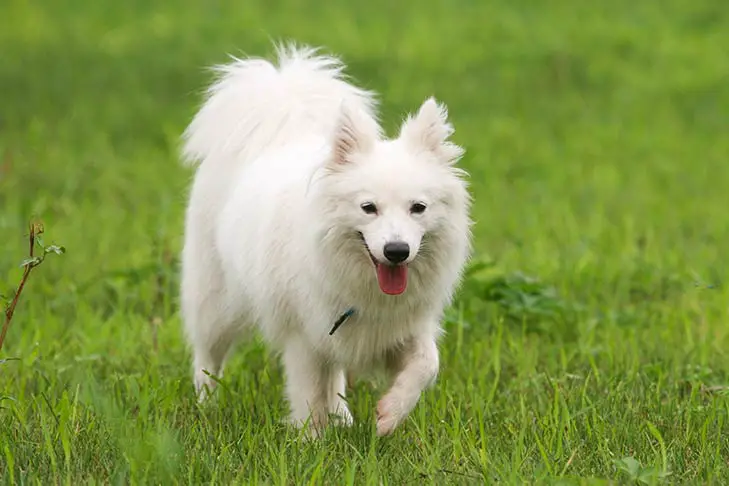The little comedians known as Japanese Spitz are here to make you smile and laugh. They are wise and incredibly devoted, and they make great friends. They are up for an adventure and will accompany you on a trek, a drive, or a trip to the lake or beach. They simply enjoy being with their humans and love them.
As a companion breed, Japanese Spitz enjoys their families’ company and are genuine little comedians. They constantly have a smile on their face and are ready to learn because they want to please their family. Their pure white coat, which has a mane-like appearance around their neck, is one of their distinguishing characteristics. They have gorgeous hair plumes that curl over their backs, just like other spitz breeds do. They have a pointed muzzle that resembles a fox, dark eye rims, a pointed triangle-shaped nose, and ears that stand upright and move like radar towers, hearing everything around them and making this breed extremely vigilant.





 Health
Health Grooming
Grooming Exercise
Exercise Training
Training Nutrition
Nutrition